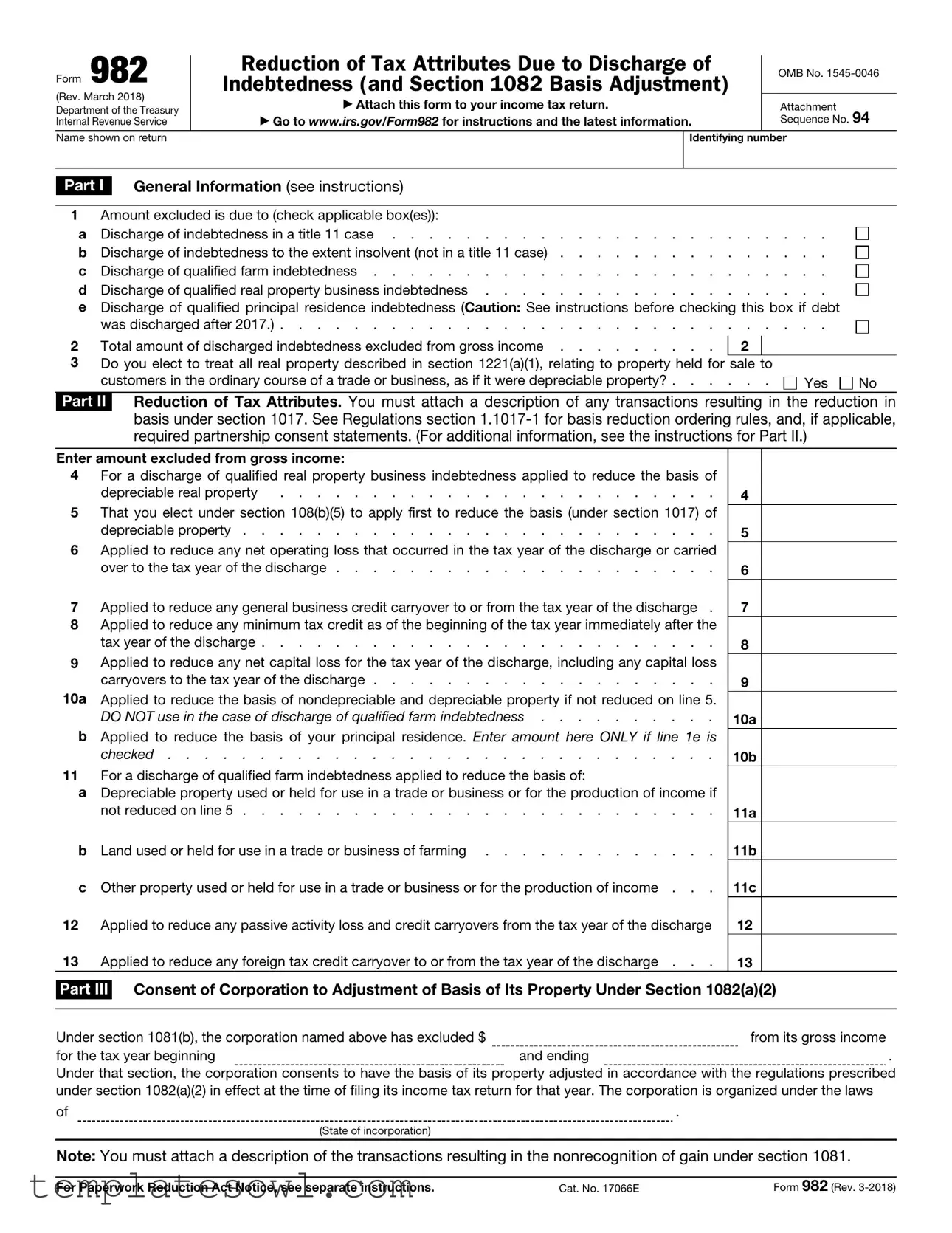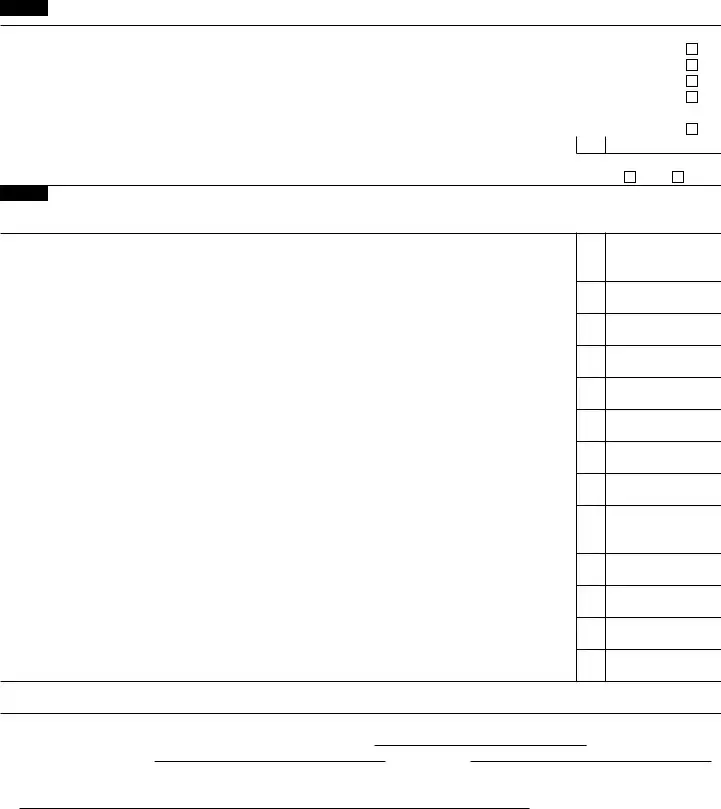Enter amount excluded from gross income:
4For a discharge of qualified real property business indebtedness applied to reduce the basis of
depreciable real property |
. . . . . . . . . . . . . . . . . . . . . . . . |
5That you elect under section 108(b)(5) to apply first to reduce the basis (under section 1017) of
depreciable property . . . . . . . . . . . . . . . . . . . . . . . . . .
6Applied to reduce any net operating loss that occurred in the tax year of the discharge or carried
over to the tax year of the discharge . . . . . . . . . . . . . . . . . . . . .
7 |
Applied to reduce any general business credit carryover to or from the tax year of the discharge . |
8Applied to reduce any minimum tax credit as of the beginning of the tax year immediately after the
tax year of the discharge . . . . . . . . . . . . . . . . . . . . . . . . .
9Applied to reduce any net capital loss for the tax year of the discharge, including any capital loss
carryovers to the tax year of the discharge . . . . . . . . . . . . . . . . . . .
10a Applied to reduce the basis of nondepreciable and depreciable property if not reduced on line 5. DO NOT use in the case of discharge of qualified farm indebtedness . . . . . . . . . .
bApplied to reduce the basis of your principal residence. Enter amount here ONLY if line 1e is
checked . . . . . . . . . . . . . . . . . . . . . . . . . . . . . .
11For a discharge of qualified farm indebtedness applied to reduce the basis of:
aDepreciable property used or held for use in a trade or business or for the production of income if
not reduced on line 5 . . . . . . . . . . . . . . . . . . . . . . . . . .
b |
Land used or held for use in a trade or business of farming |
c |
Other property used or held for use in a trade or business or for the production of income . . . |
12Applied to reduce any passive activity loss and credit carryovers from the tax year of the discharge
13 |
Applied to reduce any foreign tax credit carryover to or from the tax year of the discharge . . . |

